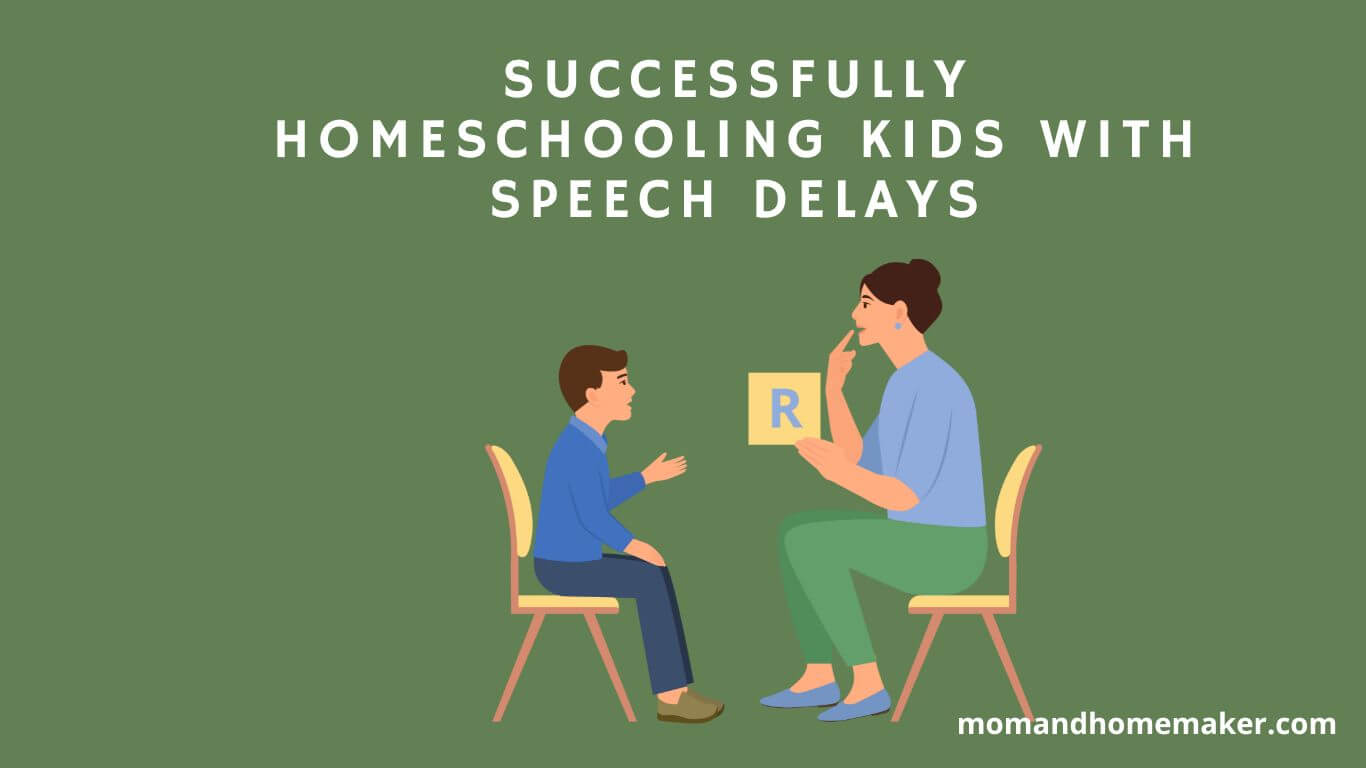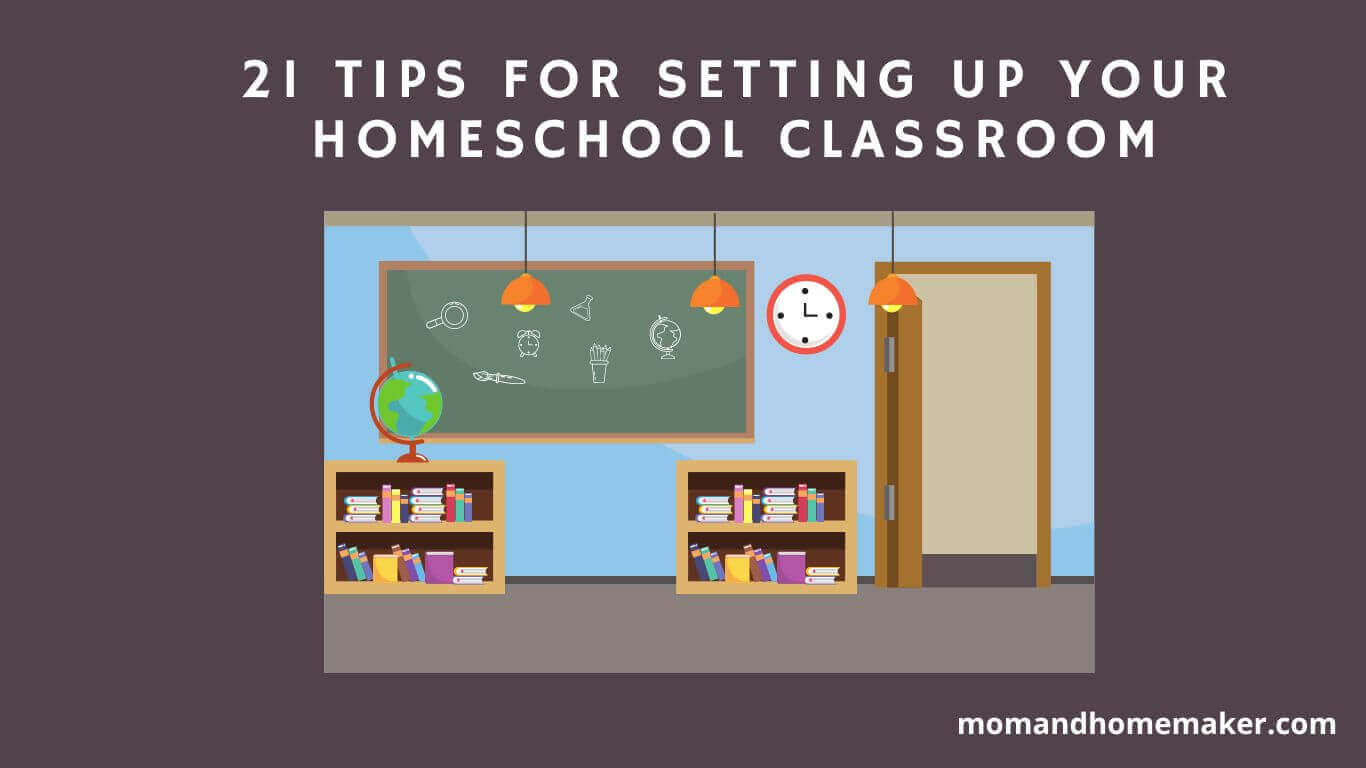As a homeschooling family, one of the most important components of your curriculum is the creation of an effective schedule. However, with so many factors to consider and so many unique needs within your household, it can be challenging to know where to start. In this blog post, we’ll explore some of the key tips and strategies for crafting a homeschooling schedule tailored to your family’s specific needs. Whether you’re new to homeschooling or simply looking to optimize your current approach, these insights can help you create a structured, effective learning environment that works for everyone involved.
Determine your family’s goals and priorities for homeschooling
The first step in determining your family’s goals and priorities for homeschooling is to have an open and honest conversation with all family members. Each family member should have a chance to express their opinions and values and be heard.
This conversation should focus on what each family member feels is important to include in the homeschooling plan. Each family member should be able to voice their opinion and explain why they feel strongly about that particular point. This can help to avoid any potential disputes and ensure that everyone’s needs are taken into consideration.
Once all family members have had an opportunity to express their opinions and ideas for the homeschooling plan, the next step is to discuss and decide which goals and priorities are the most important for the family. It is important to take into consideration the needs of each family member and create a plan that works for everyone. This should be done in a way that is respectful of all family members and that takes into account the overall goals of the family.
Finally, it is important to establish a timeline and plan for achieving the family’s goals and priorities for homeschooling. This includes setting goals for each day, week, and month, as well as organizing activities and resources that will help to keep everyone on track.
It is important to create a plan that is realistic and achievable so that everyone can stay motivated and on track. It is also important to regularly revisit the plan and adjust it as needed to ensure that everyone is still on track and that the family’s goals and priorities remain a priority.
By determining your family’s goals and priorities for homeschooling, you can create a schedule that is tailored to your family’s needs and helps your children achieve their academic and personal goals.
Assess each child’s learning style and needs
When designing a homeschooling schedule, it is important to assess each child’s learning style and needs. It is essential to understand the individual learning needs of each student in order to create an effective schedule that will help children achieve success in their studies.
To assess each child’s learning style, it is important to observe the student in various learning environments, observe how the student responds to different tasks, and ask the student about his or her learning preferences. By understanding the student’s learning style, the educator can create a schedule that best suits the student’s individual needs.
It is also important to assess the child’s needs when designing a homeschooling schedule. This can include evaluating the student’s current academic performance and any special needs that the student may have.
An assessment of the child’s needs will help the educator to determine the most appropriate instruction methods, course materials, and schedule that will best fit the student’s individual needs. By understanding the student’s needs, the educator can create a schedule that is tailored to the student’s specific learning needs.
When designing a homeschooling schedule, it is important to assess the student’s learning style and needs in order to create a plan of instruction that will best fit the needs of each individual student. Understanding the student’s learning style and needs will help the educator to provide meaningful instruction that will help the student to achieve success in his or her studies.
By taking the time to assess each child’s learning style and needs, the educator can create a customized homeschooling schedule that will best serve the needs of each student. Make sure to incorporate a variety of teaching methods and approaches, such as hands-on activities, visual aids, and interactive lessons, to accommodate different learning styles.
This approach will help your child engage more actively in their education and succeed in their academic endeavors. By regularly assessing your child’s learning style and needs, you can ensure your homeschooling plan is effective and tailored to your family’s unique circumstances
Research and choose a homeschooling curriculum that aligns with your goals
Choosing a homeschool curriculum for your family can be a daunting task, especially if you’re just getting started. It’s important to research and find a curriculum that aligns with your goals and works for your family. Start by looking at the different types of curricula available, such as online classes, print-based materials, and local co-ops. Consider what your family’s needs are and how much control you want to have over what your children are learning.
Once you’ve narrowed down your options, take the time to do some research on the different curricula. Read reviews, talk to other homeschooling families, and compare the different options. Finally, make sure to factor in cost, availability of materials, and any other important details.
Once you’ve found the right curriculum, you can create a homeschool schedule that works best for your family. Set aside time each day to work on specific subjects and activities and plan for regular breaks throughout the day.
Consider what kind of structure works best for your family and find ways to make homeschooling an enjoyable experience for everyone involved. With a little research and planning, you can choose a curriculum that aligns with your goals and create a homeschool schedule that works for your family.
It is important to choose a curriculum that will cater to your child’s strengths and weaknesses while also providing challenges to encourage growth. With the right curriculum, homeschooling can be an enriching and fulfilling experience for both parents and children alike.
Create a weekly and daily schedule that accommodates your family’s routine
Creating a weekly and daily schedule that accommodates your family’s routine for homeschooling is a great way to ensure that everyone is on the same page and that tasks are completed in a timely manner. To begin, it is important to determine what type of schedule works best for your family.
This can include a traditional schedule, in which subjects are completed in the same order every day, or a more flexible approach that allows for more choice in the order of subjects. Once you have determined the type of schedule that works best for your family, it is important to make sure that there is enough time for everyone to complete their work.
This includes setting aside specific times for learning, making sure that lunch and break times are included, and allowing for some free time for play or relaxation. Additionally, it is important to create a schedule that is realistic and achievable for your family. This means not overloading the schedule with too many activities and making sure that each task is able to be completed in the allotted time.
In order to maintain consistency, it is important to create a weekly and daily routine for your family. This includes setting a specific time and place for each activity and creating a checklist of tasks that need to be completed each day. Additionally, allowing for some flexibility in the schedule can help to keep everyone motivated and on track.
This can include swapping subject days or giving children the opportunity to choose the order of their activities. Overall, creating a weekly and daily schedule that accommodates your family’s routine for homeschooling is an important part of a successful homeschooling experience.
By determining the type of schedule that works best for your family, setting aside enough time for learning, and maintaining consistency with a routine, you can ensure that everyone is on the same page and that tasks are completed in a timely manner. By considering all these factors, you can create a schedule that works for your entire family and maximizes your child’s learning potential.
Importance of involving all family members in setting a schedule
One of the most important aspects of successful homeschooling is having a clear, organized schedule. When all family members are involved in creating and maintaining the schedule, it can be a powerful tool for creating structure and helping all family members adjust to the new homeschooling lifestyle. Involving all family members in the process of setting up the homeschooling schedule is important for several reasons.
First, it allows family members to collaborate on the best schedule for the household, taking into account the varying needs of each member. It also creates a sense of ownership and responsibility for each family member, as they will be involved in the process of creating and maintaining the schedule.
Furthermore, involving all family members in the process of setting the schedule can help build trust and strong relationships between family members, and can help foster a sense of collective responsibility.
Finally, involving all family members in the process of setting the schedule also helps to ensure that everyone is on the same page and that everyone is aware of the goals, expectations, and responsibilities associated with the homeschooling lifestyle.
By involving each member of the family, you can determine the best times for learning, breaks, and other activities that align with your family’s routine and priorities. This collaborative process can also help establish a sense of teamwork and cooperation among family members.
With everyone invested in the schedule, the chances of success and adherence are increased. So, take the time to sit down with your family and involve them in the process of crafting a homeschooling schedule that will work best for everyone.
Incorporate breaks
Incorporating breaks into a homeschooling schedule is an important part of creating a successful learning environment. Breaks provide students with the opportunity to recharge and refocus on their studies, as well as help reduce stress and fatigue. Taking regular breaks also helps to keep motivation and enthusiasm for learning high.
When deciding how to incorporate breaks into a homeschooling schedule, it is important to consider the individual needs of the student. Some students may need longer or more frequent breaks than others, and the length and type of break should be tailored to the individual. Short activities such as free writing or stretching can help to refresh students during the day.
Scheduling breaks also helps to provide structure to the day. Having a regular break time can help students to better manage their time, as they will be aware of when they will be able to take a break. Structured breaks can also help students to stay on task, as they will have something to look forward to after a certain period of time.
Breaks are also a great opportunity to introduce fun activities into the homeschooling schedule. Taking a break to play a game, go for a walk, or do an art project can provide variety to the day and help to keep students engaged in their learning. Incorporating breaks into a homeschooling schedule can help to create a successful and enjoyable learning environment.
Incorporate Technology
Incorporating technology into a homeschooling schedule can help to make the learning experience more engaging, efficient, and fun. Technology can provide a range of educational tools and activities that can help to enhance the learning process, while also providing a much-needed break from traditional teaching methods.
Technology can also be used to help keep track of student progress, provide access to online resources, and give students an opportunity to explore and discover new things. When it comes to incorporating technology into a homeschooling schedule, there are a variety of options available.
For example, educational websites can provide access to a range of resources and activities that can help to supplement traditional teaching methods. Additionally, there is a range of educational apps available that can help to make the learning process more fun and engaging.
It is also important to ensure that any technology used is age-appropriate. Parents should take the time to research available resources to ensure that they are suitable for their child’s age and level of understanding. Additionally, parents should make sure to monitor their child’s use of technology and ensure that they are not spending too much time online.
Finally, incorporating technology into a homeschooling schedule can help to create a more interactive learning environment. Technology can be used to create opportunities for students to engage with one another, as well as with their teachers.
Aside from that, technology can provide a range of visual and auditory tools that can help to make the learning process more engaging and enjoyable. But it’s important to remember that technology should be used as a tool to enhance learning, not replace it entirely
Be sure to set boundaries and limit screen time to ensure a healthy balance between technology and other learning activities. By utilizing technology in a thoughtful and purposeful way, your homeschooling experience can be enriched and tailored to your family’s individual needs.
Include flexibility and adjust your schedule as needed
Flexibility is an important part of any successful homeschooling plan. As a homeschooling parent, it is important to remember that your child’s education is completely in your hands and that you need to be able to adjust your schedule as needed. Having the flexibility to tailor your schedule to fit your child’s needs can be the difference between a successful homeschooling experience and an unsuccessful one.
One way to include flexibility in your homeschooling schedule is to be open to changes and adjustments as needed. Life is unpredictable and often times your child’s needs may change. It is important to be able to adjust your plan quickly and efficiently to fit these changes. You should also try to be open to new ideas and activities that may help to support your child’s learning.
Another way to include flexibility in your homeschooling plan is to be willing to compromise when needed. You may have a set plan in mind but it is important to be willing to adjust it if necessary. If your child is struggling with a certain topic, you may need to adjust your schedule to give them more time and attention in that area. If a certain activity is proving to be too difficult, you may need to adjust the activity or switch it for something else.
Finally, it is important to remember that there is no one-size-fits-all approach to homeschooling. Every child is different and no two homeschooling plans will be exactly the same. By including flexibility in your homeschooling plan, you can ensure that you are able to meet your child’s individual needs. With the right amount of flexibility and adjustments, you can create a homeschooling plan that is both successful and enjoyable for your child.
It’s okay to experiment with different approaches until you find what works best for your family. Above all, make sure to communicate with your family members and stay open to suggestions and feedback. By including flexibility in the schedule and being adaptable, you can create a homeschooling plan that works for your unique family situation.
Plan Time for Outside Activities and socialization
Homeschooling can provide an excellent opportunity to explore the world outside of the classroom and encourage socialization. Planning time for outside activities and socialization is essential to ensure students are getting the best out of their homeschooling experience.
By taking advantage of the flexibility that homeschooling provides, parents can create a schedule that allows for plenty of time for outdoor activities and socialization. This will help to ensure that students are getting the physical activity and interpersonal skills they need to thrive. When planning time for outside activities and socialization, it is important to consider the individual needs and interests of each student.
Some students may benefit from more organized activities such as sports teams, while others may prefer a more relaxed environment like a park or playground. Parents should also take into account their own comfort level when deciding which activities to plan.
For instance, if a parent is not comfortable with their child interacting with peers in an unstructured environment, they may prefer to focus on more structured activities that involve adult supervision.
When planning for outside activities and socialization, it is important to ensure that the chosen activities are age appropriate and safe. Parents should research the activity and any potential risks that may be associated with it before allowing their students to participate.
Also, parents may want to consider enrolling their students in a homeschool group in order to provide more structure and accountability for their student’s socialization. This can help to ensure that the student is interacting in a safe and healthy environment with other homeschoolers.
It is also important to ensure that students have enough time to socialize and engage in activities of their own choosing. Allowing students to choose which activities they want to participate in can help to foster creativity and independent thinking.
It is also important to ensure that students have time to relax and pursue their own interests. By providing a balanced schedule that allows for plenty of time outside of the home and with other people, parents can help their students to thrive and grow.
While homeschooling can provide a lot of academic benefits, socialization and interaction with peers and the community is also crucial for a child’s development. Families should consider including regular playdates, extracurricular activities, field trips, and community service projects in their homeschooling plan.
By doing so, children can expand their interests and skills, develop new friendships, and gain a sense of belonging to their community. It’s also important to remember to balance academic work with outside experiences, allowing for a well-rounded and enjoyable homeschooling experience.
Conclusion
In conclusion, homeschooling can be a great way to provide your children with the education they need. It’s important to remember that no two families are alike and there is no one-size-fits-all approach to creating a homeschool schedule. Take the time to consider your family’s needs, goals, and lifestyle when crafting an individualized learning plan. With the right scheduling system in place, you can create a balanced and meaningful learning experience for your family.












